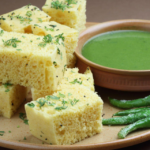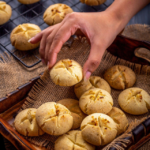
In recent years, the art of latte art has become a celebrated aspect of coffee culture. Whether you’ve visited your local café or browsed Instagram, you’ve likely seen stunning swirls, hearts, and intricate designs adorning your cup of coffee. Latte art is not only a way to make your coffee more visually appealing but also a skill that can elevate your barista game and impress friends and family. If you’re a beginner, you might be wondering where to start. Well, you’re in luck! In this guide, we’ll break down the basics of latte art and help you create beautiful designs from the comfort of your own kitchen.
If You want to Become a Barista Pro : Enroll Barista Course
What is Latte Art?
Latte art is the process of pouring steamed milk into a shot of espresso, creating a visual design in the process. The art is created by manipulating the texture and flow of milk as it’s poured into the espresso, with designs emerging from the interplay between the milk and coffee.
There are two main techniques for creating latte art:
- Free Pouring: This is the most common method where the barista pours steamed milk directly into the espresso in a controlled manner, creating patterns as the milk interacts with the coffee.
- Etching: This involves using a tool, like a toothpick or a pen, to “draw” designs onto the foam after pouring. Etching is more precise and allows for highly detailed designs but is often less popular than free pouring.
Essential Tools for Latte Art
Before we dive into creating your own latte art, let’s talk about the essential tools you’ll need:
- Espresso Machine: An espresso machine is a must for making the base of your latte. Make sure your machine has a steam wand to froth milk properly.
- Milk Frothing Pitcher: A metal milk frothing pitcher is necessary to steam and pour milk. These pitchers typically have a spout designed for precise pouring, which is key for creating beautiful latte art.
- Milk: Whole milk is preferred for latte art because its higher fat content creates a creamier, more stable foam. You can also use non-dairy milk (like oat or almond milk), but the texture may vary.
- Espresso Beans: Fresh, high-quality espresso beans are crucial for a great-tasting latte. Invest in good beans and grind them just before brewing for the best results.
Step-by-Step Guide to Creating Latte Art
Now that you’ve got the tools, it’s time to start creating! Here’s a beginner-friendly guide to help you get started with free pouring.
Step 1: Pulling the Perfect Espresso Shot
The foundation of any great latte is the espresso. Ensure your espresso is freshly brewed and rich in flavor. A single shot of espresso is typically around 1 ounce, but this can vary depending on the size of your cup. It’s important to pull a strong shot so that the milk has something to contrast with when you pour it.
Step 2: Steaming the Milk
Milk should be steamed to a creamy, velvety texture — think of it like liquid velvet. To steam milk, place the steam wand just below the surface of the milk and turn it on. This will introduce air into the milk, creating the desired microfoam. Aim for a temperature between 150°F to 155°F (65°C to 68°C).
- Tip: When steaming, listen for a gentle hissing sound. If it’s too loud, you’re aerating too much; if it’s too quiet, you may not be aerating enough. Practice makes perfect.
Step 3: Pouring the Milk
Once your milk is steamed, it’s time to pour. Hold your pitcher just above the cup, starting with a slow and steady pour. As you begin, pour into the center of the espresso and aim to make the milk mix with the coffee. When the cup is about half full, you can start moving the pitcher closer to the surface, pouring faster and with a slight wiggle motion.
To create a heart shape or simple designs, practice controlling the flow and speed of your pour. A heart typically forms when you slow the pour towards the end and then make a quick, precise flick of the wrist.
Step 4: Practice and Experimentation
Latte art is all about practice, so don’t be discouraged if your first few attempts don’t turn out perfectly. As you improve, you can experiment with different patterns, such as the classic heart, rosette, or even more complex swirls and leaves.
Common Latte Art Designs
As a beginner, you’ll probably start with a few simple designs. Here are some of the most common latte art patterns:
- Heart: The heart is the simplest and most iconic design. It’s created by pouring a steady stream of milk into the center of the espresso, then flicking the wrist to form the top of the heart.
- Rosetta: This design resembles a fern or a leaf pattern. It’s created by wiggling the milk stream back and forth as you pour, then finishing with a smooth flick to create the final shape.
- Tulip: A bit more advanced, the tulip is made by pouring several layers of milk in a circular motion. Each layer is slightly smaller than the previous one, forming the shape of a tulip flower.
- Swan: A more advanced design, the swan requires multiple pouring techniques to create the body and wings. It’s a beautiful and intricate pattern for the more experienced latte artist.
Tips for Success
- Consistency is Key: Aim for smooth, consistent pours. If the milk is too thick or too thin, your design will not hold.
- Freshness Matters: Use fresh espresso and freshly steamed milk for the best taste and texture.
- Don’t Rush: Take your time. Latte art is as much about technique and precision as it is about the aesthetic outcome.
- Experiment with Your Pitcher: Try different pitcher sizes and spouts to see what works best for your pour style.
Enroll in a Barista Course
If you’re excited about learning more about the craft of coffee and perfecting your latte art skills, consider enrolling in a Barista Course! Whether you’re a beginner or looking to refine your technique, this course will help you master the art of espresso and latte design. Click here to enroll in the Barista Course now!
Final Thoughts
Latte art is a fun and rewarding skill that anyone can learn with a little practice. Start with the basics, keep experimenting, and enjoy the journey! Whether you want to impress friends or simply enjoy a beautiful cup of coffee, mastering latte art can bring a whole new level of joy to your daily coffee routine.
So, grab your milk, espresso, and frothing pitcher, and start practicing — you’ll be creating latte masterpieces in no time!
More About us
For More Cooking Course you Can Visit our Website




